Description
datjuluma guyula
Etching
Paper Size: 84 x 68cm; Image Size: 65.5 x 50.3cm; Paper: Hahnumuhle
Year: 2024
ID: 4617-24
Gunyan
Datjuluma produced this work with reference to her mothers country at Djarrakpi which is at the base of Cape Shield, the northern perimeter of Blue Mud Bay. This Maŋgalili country is also site of one of the Ancestral ceremonial/burial grounds called the Yiŋapuŋapu.
The Yiŋapuŋapu is a low relief sand sculpture designed to keep any contamination of death at bay as traditionally the body of the deceased was placed within it for initial mortuary rites, to cleanse the bones of dangerous spirits held within the body tissue. A metaphor for this action of cleansing is utilised by the Maŋgalili in their sacred paintings by way of depicting Mirriya or Gunyan the sand or ghost crab picking the bones of a fish carcass on the beach. Contemporary Maŋgalili on the beaches of Djarrakpi put their food scraps in one place when at camp – the secular Yiŋupuŋapu. This painting shows the totemic Mirriya which feeds on the Ancestral remains of the parrot fish Yambirrku. The miny’tji or sacred clan design for the sandscapes of Djarrakpi both adorn and surround the crabs. In traditional mortuary ceremony for this clan the last act is to catch and eat Yambirrku and dispose of the bones in the ceremonial sand sculpture for the crabs to pick clean overnight.
So a canoe and paddles were made and their journey began by paddling down the Milŋiyawuy River which flows into the Blue Mud Bay near Djarrakpi. In the bay, at a place of significance, strong winds developed and a wake from the ancestral turtle capsized the canoe – the men drowned. At this place is the site of Yiŋalpiya, the freshwater crocodile’s nesting place. This same place is the spirit source for Maŋgalili people.
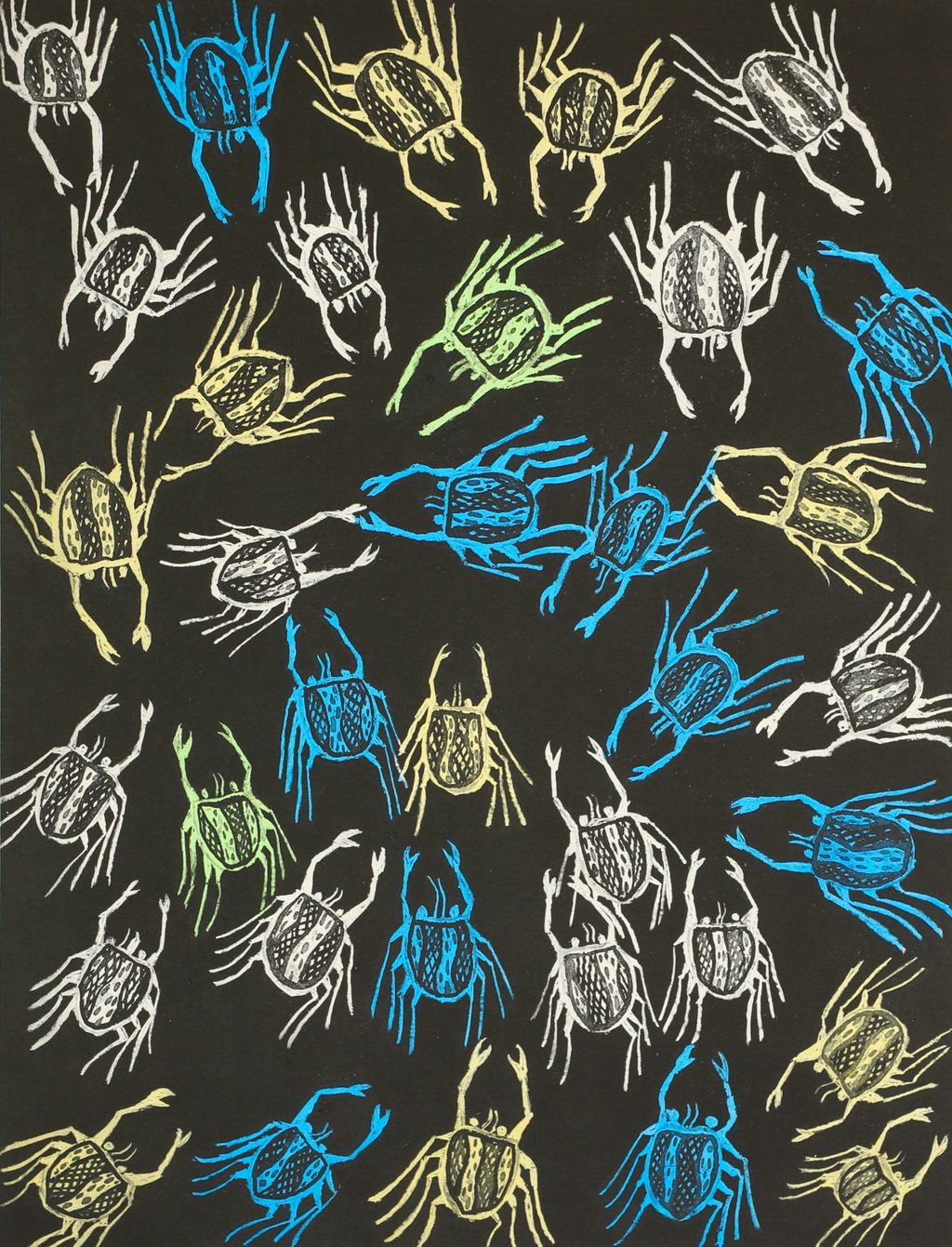
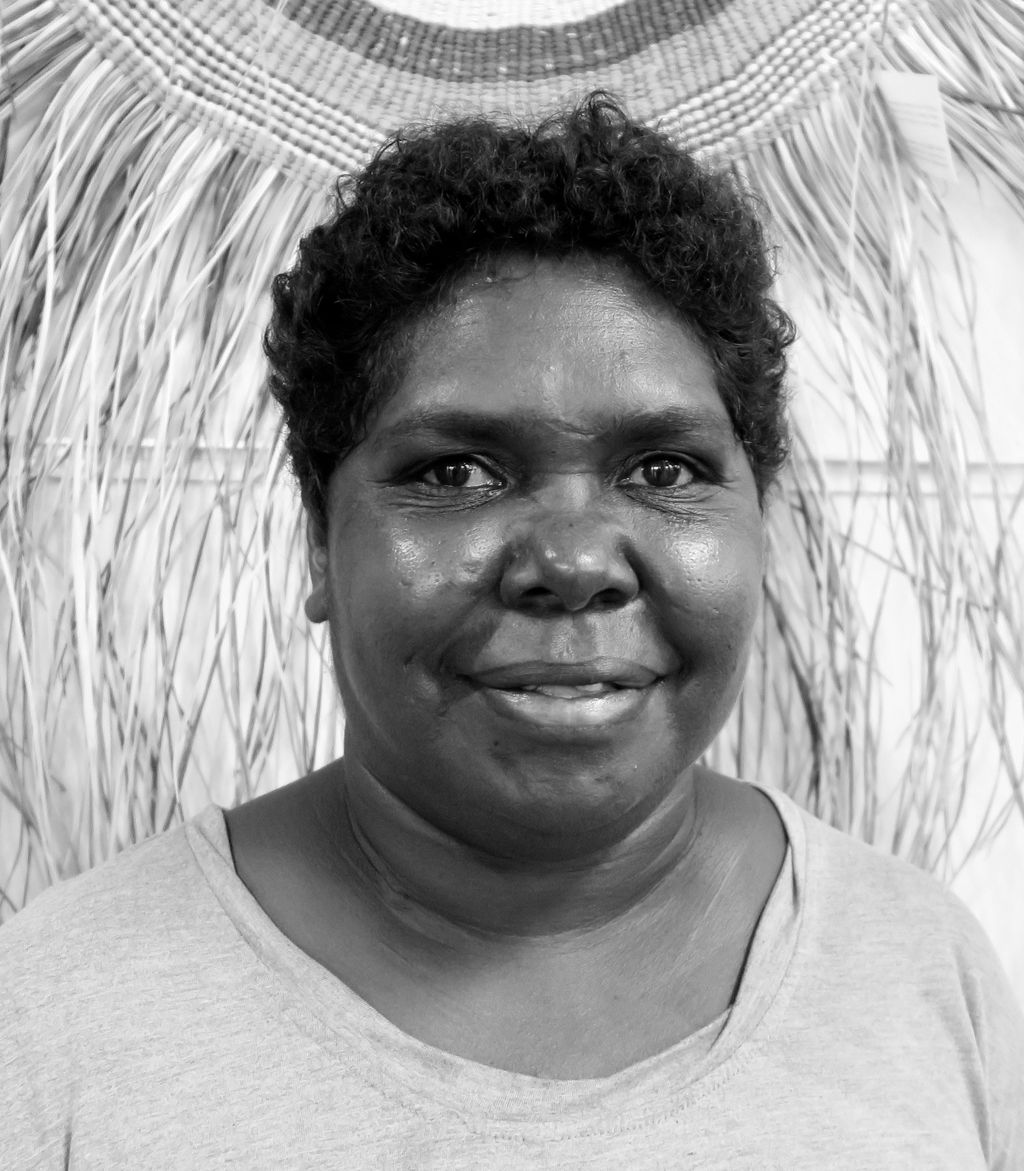
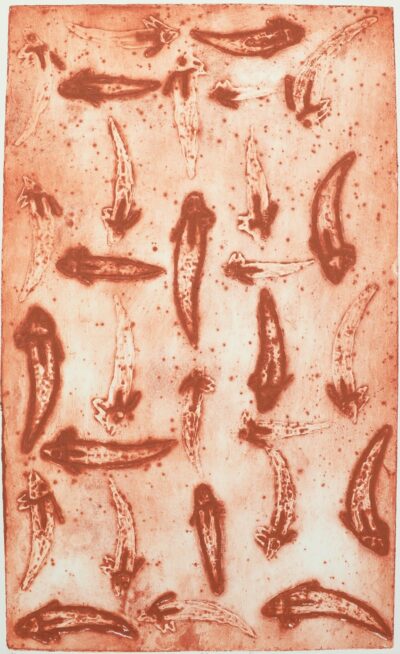
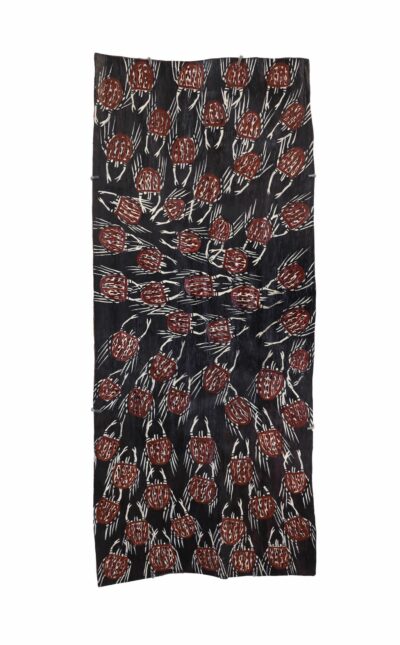
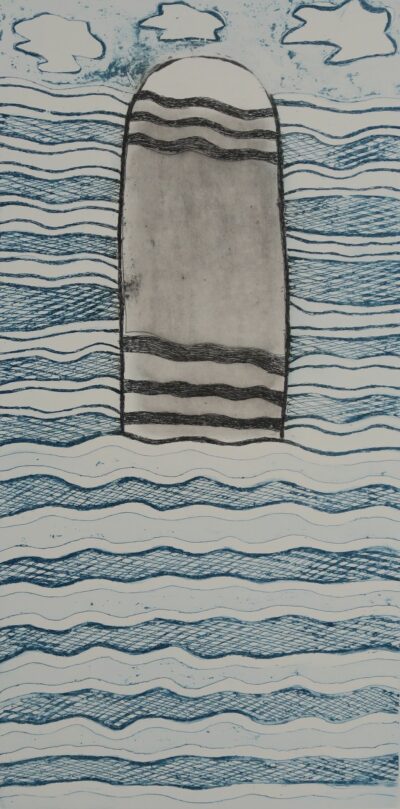
Reviews
There are no reviews yet.